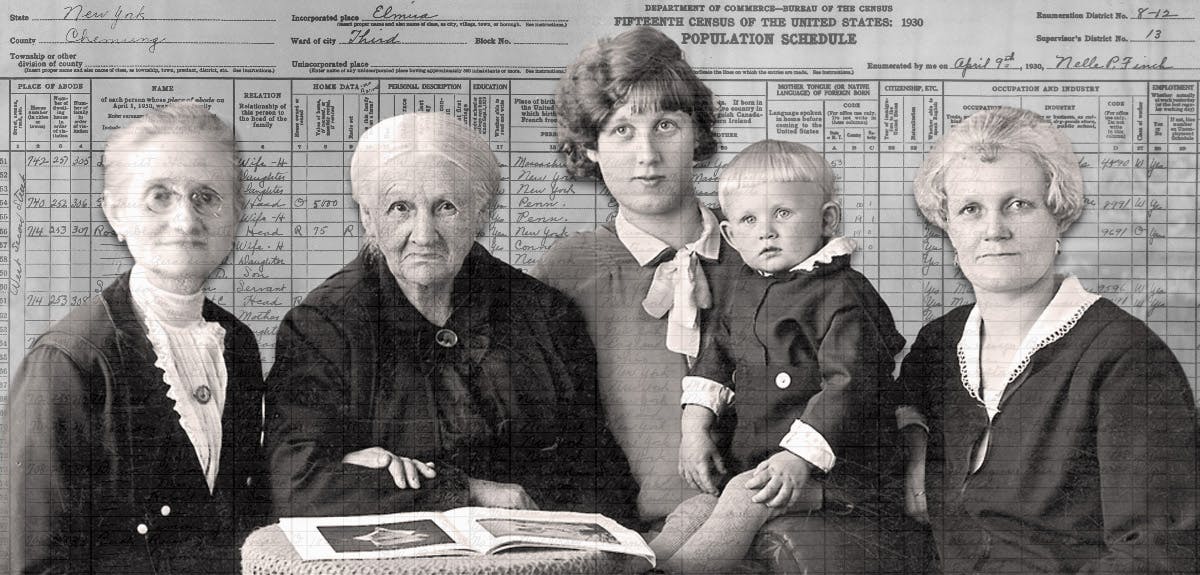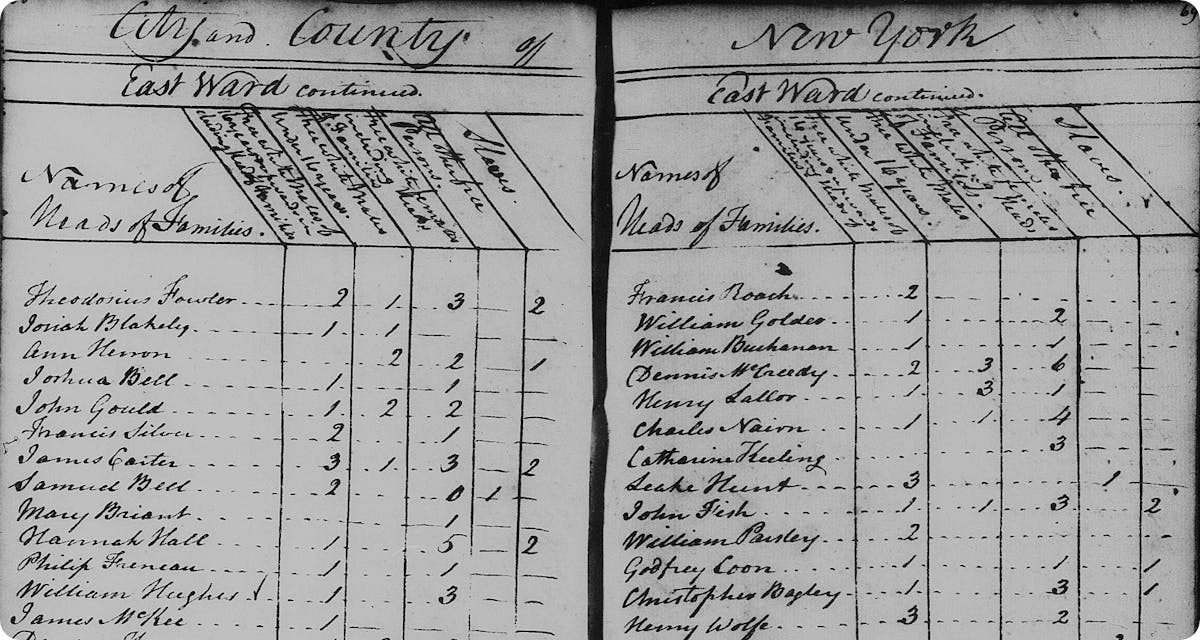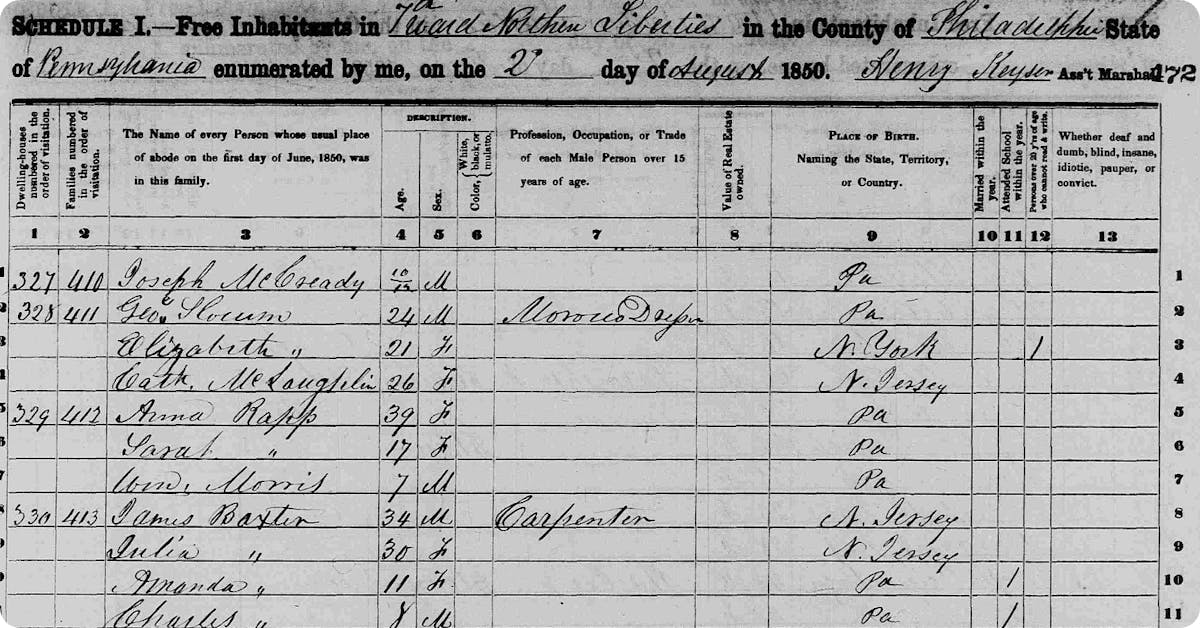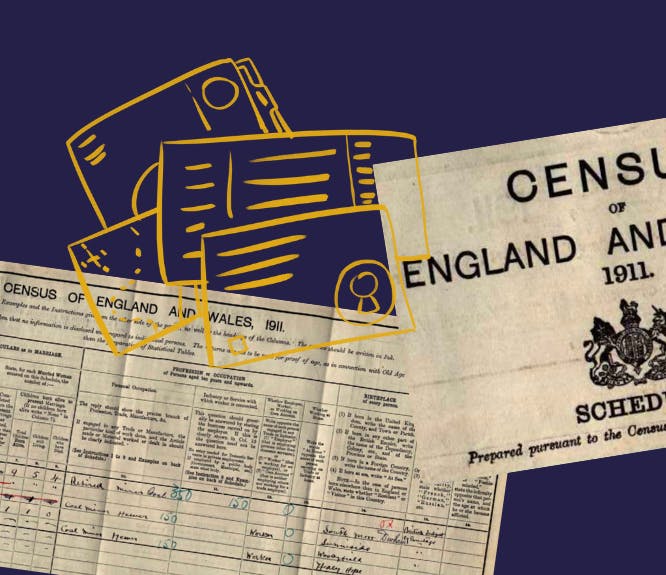Everything you need to know about US census records
4-5 minute read
By The Findmypast Team | September 25, 2019

Find out what a census is, what it's used for in family history and more...
Census records are some of the most important resources for family history. They help you track how your family changed over time and reveal information about your ancestors that you won’t find anywhere else.
Historical census data is held by the National Archives but you can also access online US census records from 1790-1940 here at Findmypast.
What is a census?
A national census is recorded by the US government periodically and acts as a comprehensive report on the population of the country at that point in time. The recorded population data is used by the government to for plan things like healthcare, education and employment services. The official meaning of a census from the Merriam-Webster Dictionary says it's;
""a usually complete enumeration of a population, specifically, a periodic governmental enumeration of population.""
Taking a census usually involves all householders completing census forms that list information about their lives and their family on a specific day periodically. A census taker or enumerator delivers and collects the household forms in their assigned area. From a genealogy perspective, historical census records are invaluable snapshots of your relatives at a given point in time.
The history of the US census
The United States was the first nation in the world that made the census a mandatory part of its constitution. Originally, the primary purpose of the census was to apportion each state's seats in the House of Representatives. After centuries of population growth, the government decided to cap the size of Congress at 435 records after the 1910 census. Today, the census is the largest non-military operation undertaken by the United States government.
How often is the census?
In the United States, a population census has been taken on a given census day every 10 years since 1790. Due to privacy laws, US censuses are not released to the public until 72 years after they were taken. This means the most recent census available to the public is the 1940 census. The 1950 census is due for release in 2022 (on April 1 for those of you counting down the days).
How to use census records for family history
Thanks to census records, genealogists can find the household of every member of the US population (okay, not every member - but experts estimate that upwards of 90% of the population was successfully captured in each census) at consistent intervals of 10 years.
When we know so many of our family members will have been captured in the census, it's a no-brainer to start there. Savvy genealogists will begin with the census to create an outline of their family, generation by generation.
Learn: 9 tips for searching US census records
Getting the most out of census records involves knowledge of each individual census. They all differed slightly and contain different information, which is part of their appeal - you can find the same ancestor in multiple censuses and learn something new each time.
What can be found in each census?
1790 census
The first US census was taken on August 2, 1790 and took 9 months to complete. The information found in the 1790 census includes
- Name of the head of household
- Number of free white males 16 years of age and older in the household
- Number of all free white females in the household
- Number of all other free persons in the household (reported by "sex and color")
- Number of slaves owned

1790 census return from New York City
Early American censuses were mainly concerned with taxation, voting and military service - something mostly confined to free white males at the time. For this reason, the 1800 census, 1810 census, 1820 census, 1830 census and 1840 census all contain the information above, and not much more.
1850 census (and beyond)
From 1850 onward, all individuals in the household were captured in the United States Census. It was also the first census with separate slave schedules.

1790 census return from Philadelphia
US census records from 1850-1940 could reveal your ancestor's:
- Name
- Race, sex and age
- Marital status and years of marriage
- State or country of birth
- Parents' birthplaces
- Address and value of property
- Whether the person was blind, deaf or dumb and whether they could read or write (if aged 20 or over)
- Occupation
Note: not all of this information is available in every census.
The lost census of 1890
Tragically for family historians, the 1890 US census was destroyed in a fire in 1921. However, there are alternative ways to pinpoint your family during this time period. Take a look at our list of 1890 census hacks.
International census records
America is a nation built by immigrants so inevitably, you'll be looking to get back to national census records from your ancestors' country of origin at some point in your research. Luckily, we can help.
British census records
As the home of British and Irish family history, Findmypast is the go-to resource for censuses from across the pond.
- Delve into the England and Wales Census from 1841-1911. The next available edition, the 1921 census is due for release in 2022, only on Findmypast.
- The census from Scotland is available up to 1901 on Findmypast, while you can access the 1911 Scotland Census on scotlandspeople.gov.uk.
All of these records include much of the same information that US census returns have. With our UK records, you can also search the census by address.
Irish census records
Apart from some fragments, most of Ireland's 19th-century census records don't survive. You can access the most recently available Irish censuses from 1901 and 1911 on Findmypast. The details you'll discover are largely the same as British census records.
The 2020 US Census
The next US census is scheduled to take place on Wednesday, 1 April 2020, a decade on from the most recent one in 2010. Just imagine, generations from now, your descendants might be checking it to find out more about you.




